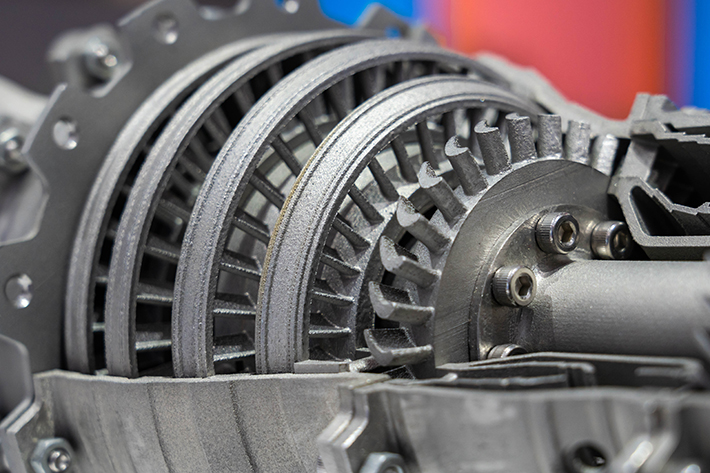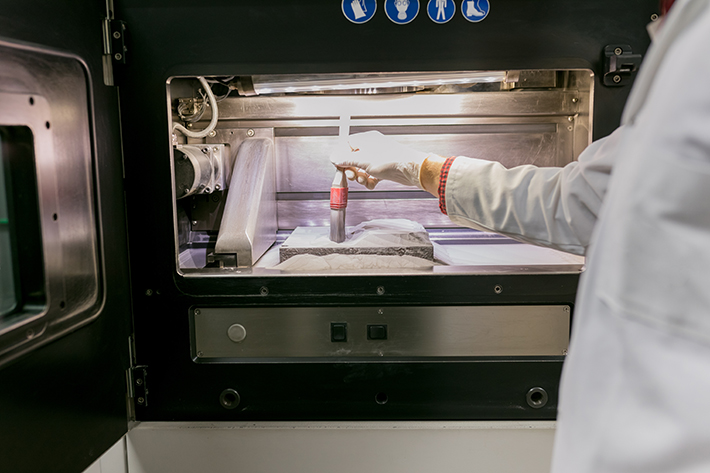
Making Additive Manufacturing Safer
When it comes to manufacturing, there are generally two approaches: the traditional method, in which materials such as steel and titanium are carved down and plastics are molded into finished products; and the new approach, in which items are built up layer by layer using melted, semi-melted, joined or fused, or cured materials.
Call it additive manufacturing (AM) or 3D printing, but whatever you call it, it represents the future of manufacturing as we know it.
“Additive manufacturing started out over 30 ago as a way of making prototypes a bit faster and in an automated way,” explains Paul Bates, additive manufacturing lead project engineer at ASTM International. “Because back in those days most prototypes were made by hand or by modifying existing parts. Now we can take a 3D CAD file and manufacture a finished part just by stacking layers of material on top of one another.”
READ MORE: The 5 Most Important Standards in AM
This type of manufacturing is now used in nearly every industry, from aerospace to medical devices to consumer products like athletic footwear and much more. A wide range of different substances can be used for layering materials, including metals, plastics, ceramics, concrete, and glass, all carefully managed by CAD software that guides the print head as it outlines and combines layers into the end product.
However, like any manufacturing process, AM comes with its share of risks, particularly because it is a newer field. In more established manufacturing processes, the safety concerns are well understood and documented, but in additive, the process is less familiar and materials are often unique, leading to potential confusion.
“The types of locations that are using these manufacturing tools may not have the same understanding of safety and the appropriate safety protocols in place to manage those risks,” Bates says, highlighting examples like the need for ventilation when working with high-temperature resins as well as emissions-management systems to deal with the particulates that these types of machines give off.

New materials and processes have created the need for new safety standards in the field of AM.
“It’s a different kind of process, but the risks are just as prevalent as in any manufacturing setting,” he says. “It’s about understanding what you’re working with. If I already use titanium in my process, how is this [additive] titanium different than the titanium I currently use? It’s not a hard, solid piece like it would traditionally be, but it’s typically in powder form, very small particles that are measured in microns. Particles that small can potentially ignite under certain conditions and can also pose an inhalation risk. Just because someone is familiar with machining from block form doesn’t mean they understand all of the risks and safety considerations that come with additive manufacturing.”
Given these new risks and the growing popularity of this technology across industries, ASTM International has been actively working on a series of new standards designed to address the safety of AM systems. The committee on additive manufacturing technologies (F42) was formed in 2009, and its subcommittees cover design methods, materials, applications, and test methods, as well as environment health and safety.
Although F42 does not yet have any active safety standards, several are under development to address risk as it relates to AM.
1) New guide for AM: Investigation for additive manufacturing facility safety management (WK73227)
In March 2020, ASTM signed a memorandum of understanding with Underwriters Laboratories (UL) to publish a dual standard that would become the first standard of its kind directly focused on AM safety. Using UL3400 as the basis, this proposed guide was created. It addresses facility safety management for 3D printing, covering the various hazards associated with materials and equipment where parts are manufactured using powder-based AM techniques. This includes everything from fire and explosion, to toxic exposure, particle inhalation and other hazards.
2) New guide for AM: Standard guideline for use of metallic materials (WK72391)
This proposed standard is intended to provide a guide for risk assessment when working with AM systems using metal feedstocks such as powders and wires. Once approved, the standard will document best practices for all aspects of the manufacturing process using these materials, including how to handle and dispose of waste materials.
3) Test method for determination of particle and chemical emission rates from desktop 3D printer material extrusion (WK66473)
Emissions are one of the often overlooked risks associated with AM, so once approved, this test method will specify best measures and track the particle and chemical emissions that are being released by 3D printing devices, including those used in non-industrial environments like schools and offices. It will include the creation of an Emission Test Chamber that will measure temperature, humidity, air exchange rate, and more, as well as standards around monitoring, analysis, and reporting of emissions data.
FOR YOU: The Next Industrial Revolution
“The real challenge now is the fact that there is a lot of information available on things like fire ratings for facilities, ventilation, and particle-handling standards,” Bates explains. “Pulling all of these different pieces of the puzzle together into a coherent set of standards for additive manufacturing that allows organizations to truly understand what it takes to be safe is the goal in the long run. In any type of manufacturing, it’s easy to create a situation where people can get hurt, but it’s often much harder to create situations where they don’t get hurt. That certainty is what we want to bring to additive manufacturing.”
Tim Sprinkle is a freelance writer based in Colorado Springs, Colorado. He has written for Yahoo, The Street, and other websites.
 SN Home
SN Home Archive
Archive Advertisers
Advertisers Masthead
Masthead RateCard
RateCard Subscribe
Subscribe Email Editor
Email Editor